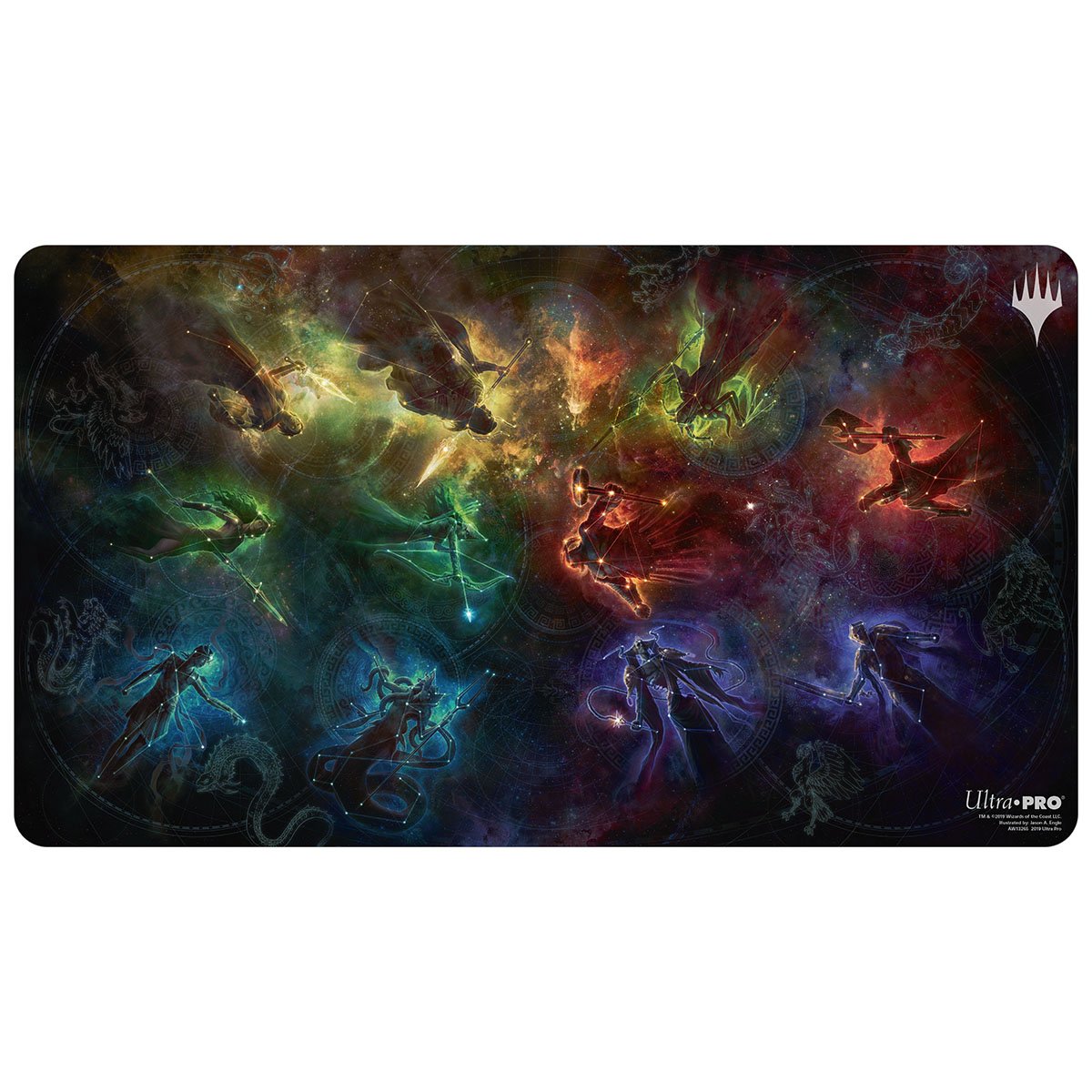I know that I am mortal by nature, and ephemeral; but when I trace at my pleasure the windings to and fro of the heavenly bodies I no longer touch the earth with my feet: I stand in the presence of Zeus himself and take my fill of ambrosia.
—Ptolemy, from Almagest
Good morning everyone, and welcome to the Mirror Gallery here on Hipsters of the Coast. Since even before the time of Ptolemy, people have looked to the sky to commune with the most powerful beings in their world. Ptolemy was a man of science, math and geography, with astronomy chief among them. Yet as we read above there was one thing that swept him off his very well-grounded feet, the stars in the night sky. In those moments, he was infinite, and the constellations he watched not only put him at the feet of Gods but offered a seat at their banquet table. A fill of ambrosia.
Theros Beyond Death offered its own opportunity to those willing to no longer touch the earth with their feet. The set brought with it a lot of incredible images, but one amalgam of eleven artworks has me simply starstruck: the showcase constellations by Jason Engle, featuring all of the Gods and Demigods of Theros.
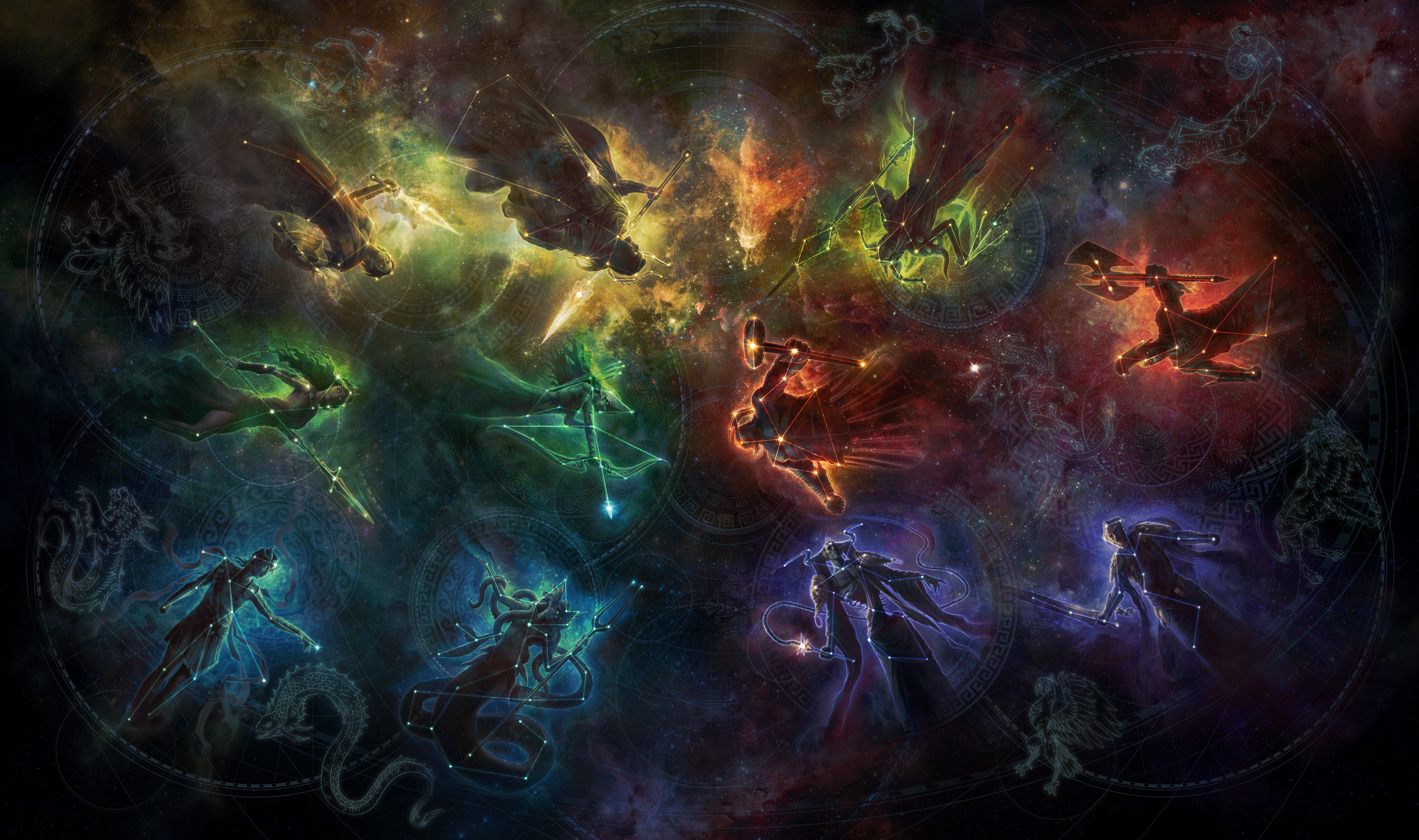
This masterpiece was my personal fill of ambrosia from the set. I had the privilege to talk with Jason about everything that went into this illustration, from the commission through his execution, and even a bit of reflection. If you’re ready for liftoff, let’s take a journey to another place, and welcome Jason to the Mirror Gallery for the first time to explore this magnificent work of art.
Hi Jason, and welcome to the Mirror Gallery here on Hipsters of the Coast! First things first, an introduction: who are you, where are you from, and what do you do?
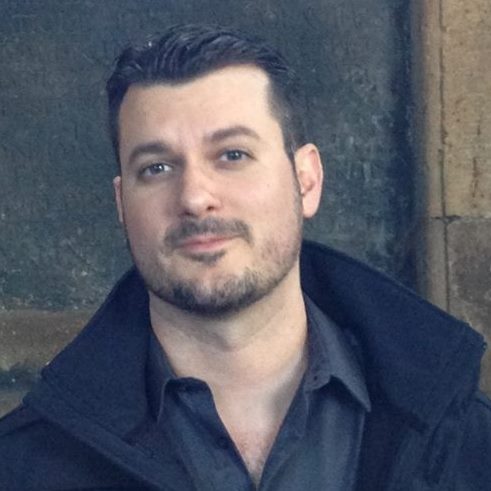
I’m from California originally, though I’ve lived in Florida for the past twenty years. I grew up playing D&D and Magic, as well as a lot of video games, read fantasy novels, watched any genre movies or TV shows I could find, and just all around loved the fantasy and sci-fi genre and spent as much time with it as possible. Including when I found the time to take all of that entertainment and use it to inspire drawings and sketches and world building projects, something I still enjoy immensely today, only now, I get paid to do it, which is pretty amazing.
I work primarily for larger publishers and entertainment companies from all over the globe, and have contributed to a lot of games and projects over the 20 years I’ve been in the business. It’s been a great ride so far, and I can’t imagine doing anything else.
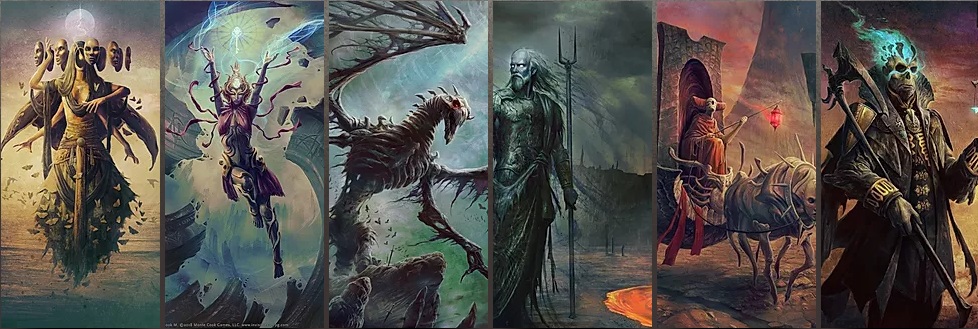
As a kid, I spent time in libraries, mainly because when I was very young, the internet wasn’t really a thing yet. So all we had were real physical books. Books on mythology fascinated me especially, as it’s the root of all that fantasy genre stuff I so loved. So whenever I could find some books on mythology, I was happy. But there was a problem in that many of them didn’t have art, and I’m kind of a fan of that stuff, so this was always disappointing. But the books on Greek myths, for whatever reason, seemed to have a lot more illustrations than any of the others.
I loved astronomy as a kid, as it was an extension of the Greek mythologies that I had been discovering, and I found it fascinating that they used their myths and stories to help them map and learn about stars and planets. I had also discovered a specific book on astronomy that contained a number of great illustrations of the Greek gods, and spent hours just admiring the work of these characters and was inspired by those few images for years to come. It wasn’t until much later that I realized those gods were actually painted by one of my greatest artistic influences, Michael Whelan.
Maybe it’s just easier to draw togas and goat legs on people? No idea. Anyway, this led to a lifelong love of mythology, but especially, the Greek stories, which is why I was such a big fan of Theros and was very happy to work on a number of cards for the original set back in 2012.
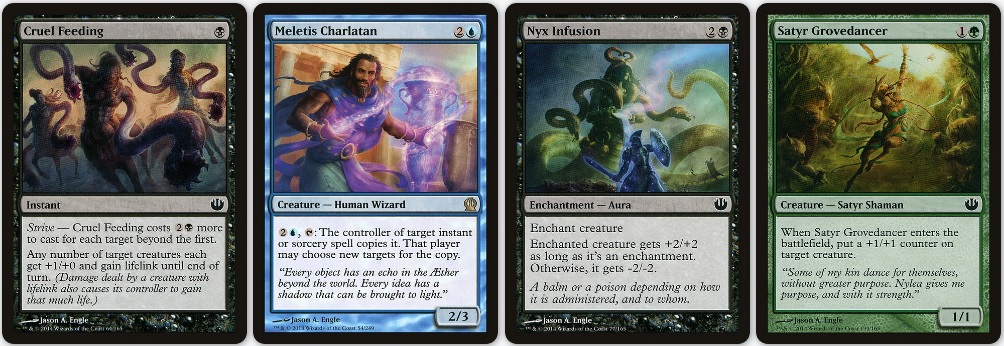
I’m guessing you were pretty excited to go back to Theros then! Let’s start this journey where you started. How did this gigantic assignment begin?
I received an email from the art director, Dawn Murin, in November 2018, about 4-5 months before the project was due, which is very unusual, and about double (or triple) the normal span of a project timeline for Magic. But this was far from a normal project. She offered to have me take on six of the Theros Gods, for the special showcase cards, and in a unique style.
She asked if I was up for something unusual, and was willing to work on finding a style based on a concept piece they had done in-house as a guide. Essentially a constellation stick figure, glowing, and done to resemble a character from Theros, on a starfield background.

I was so excited by the prospect of going back to Theros, one of my all-time favorite worlds in MTG, and getting a chance to work on art for the most iconic characters in the setting that I replied immediately, and in enthusiastic fashion. Probably a little overly enthusiastic.

And a few days later, I received a second email, asking me if I wanted to also do the demi-gods, as the creative team was so excited by the concept of the constellation showcase style, that they wanted as many of them to have that style as possible. Of course I could barely believe my good fortune, and was even more thrilled than before.

The art director chose me for this project because she had seen my recent work on a large postermap for their D&D product line, which involved a fair bit of detailed linework and embellishment.
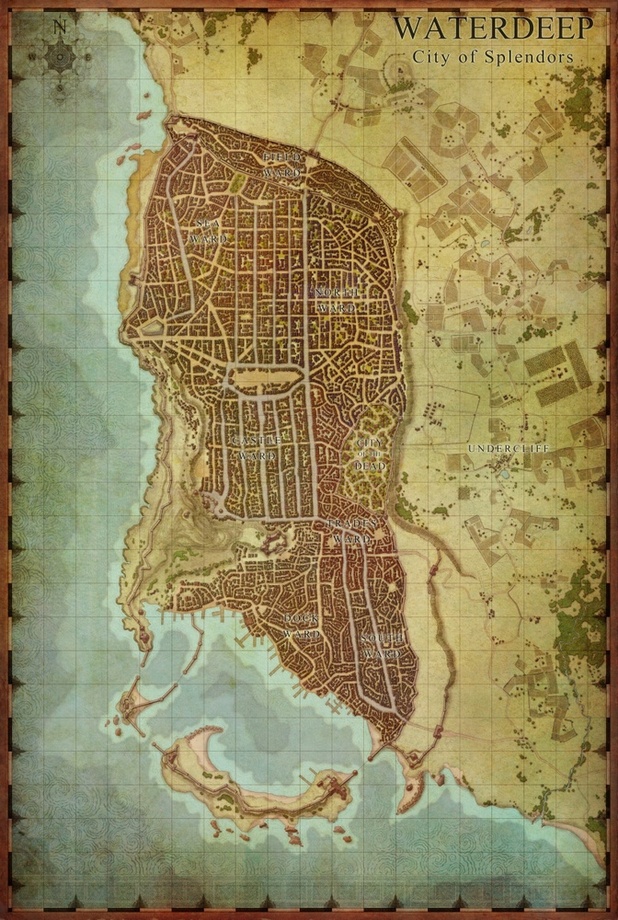
Waterdeep, City of Splendors by Jason Engle, for Dungeons & Dragons, Wizards of the Coast. Digital Final.
I had also recently been working at the office with her and the other art directors on what’s called a concept push: drawing up concepts for an upcoming set of Magic. When I work on concept art, I primarily use linework in a more traditional style than many concept artists of today’s generation.
So I guess when she needed someone who could work on a unique approach to these showcase cards as star-chart constellations, with a background in graphic design, cartography, and a solid handle on pure linework, she thought of me. And I’m very glad she did.
So you have an 11 card commission to map the night sky of Theros, with all its deities as constellations—where do you even start?!
I began the project by doing a lot of digital style roughs and linework sketches, trying to find a look that would best use the original concept, but expand on it to create enough color and depth to feel like a fully developed image, and something worthy of the special showcase card status.
Once I found a style that we were pleased with, I started doing more focused digital color roughs of the figures, and originally turned in three, as a proof of concept. Erebos, Nylea, and Purphoros.
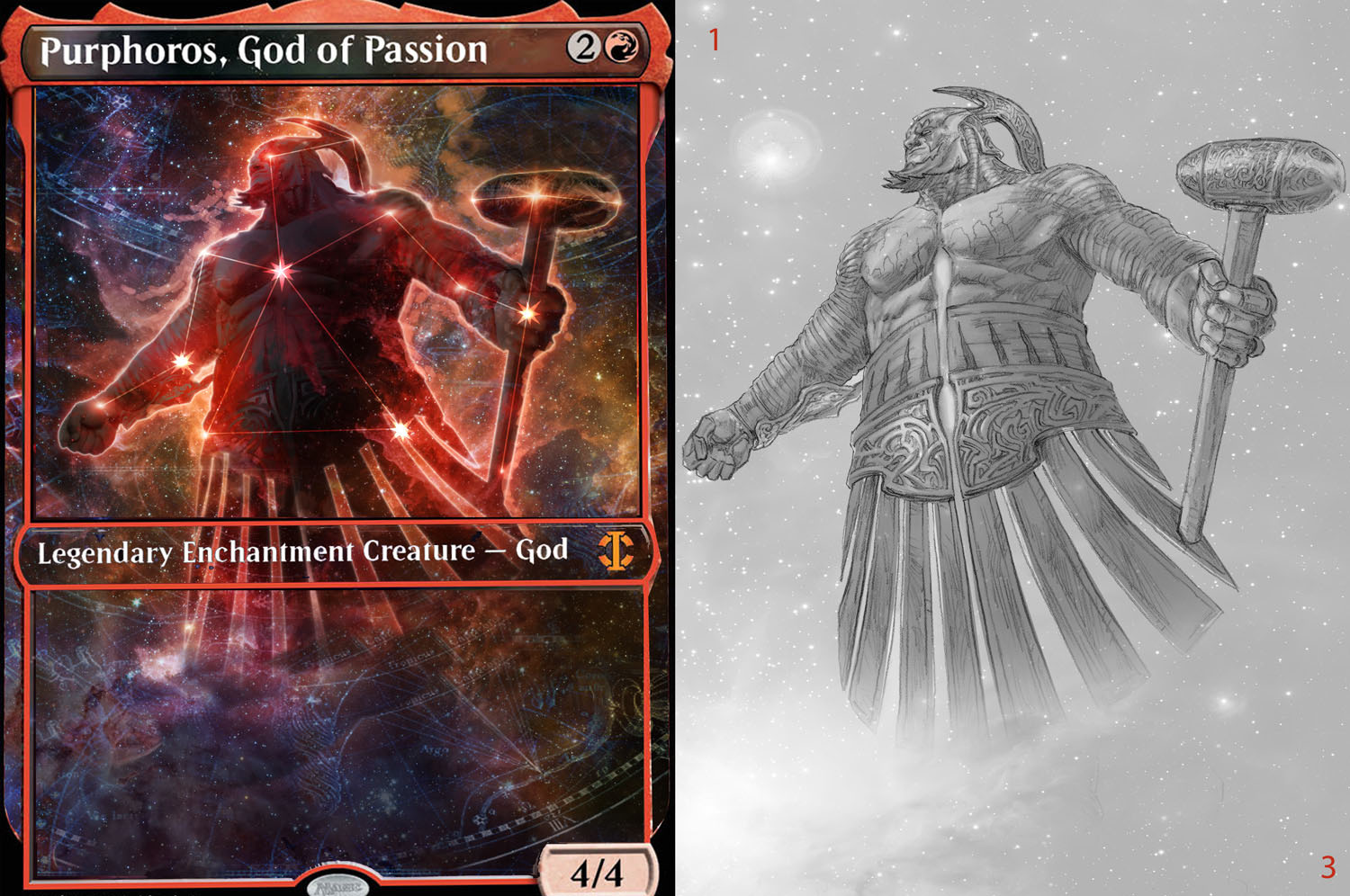
Proof of Concept for Purphoros, Bronze-Blooded
Once Dawn had approved the digital roughs, I proceeded to create preliminary linework sketches for the remainder of the characters, and once those were approved, I created what I have been calling my “preliminary paintings” which are really just an expansion on a process I’ve been employing for a while.
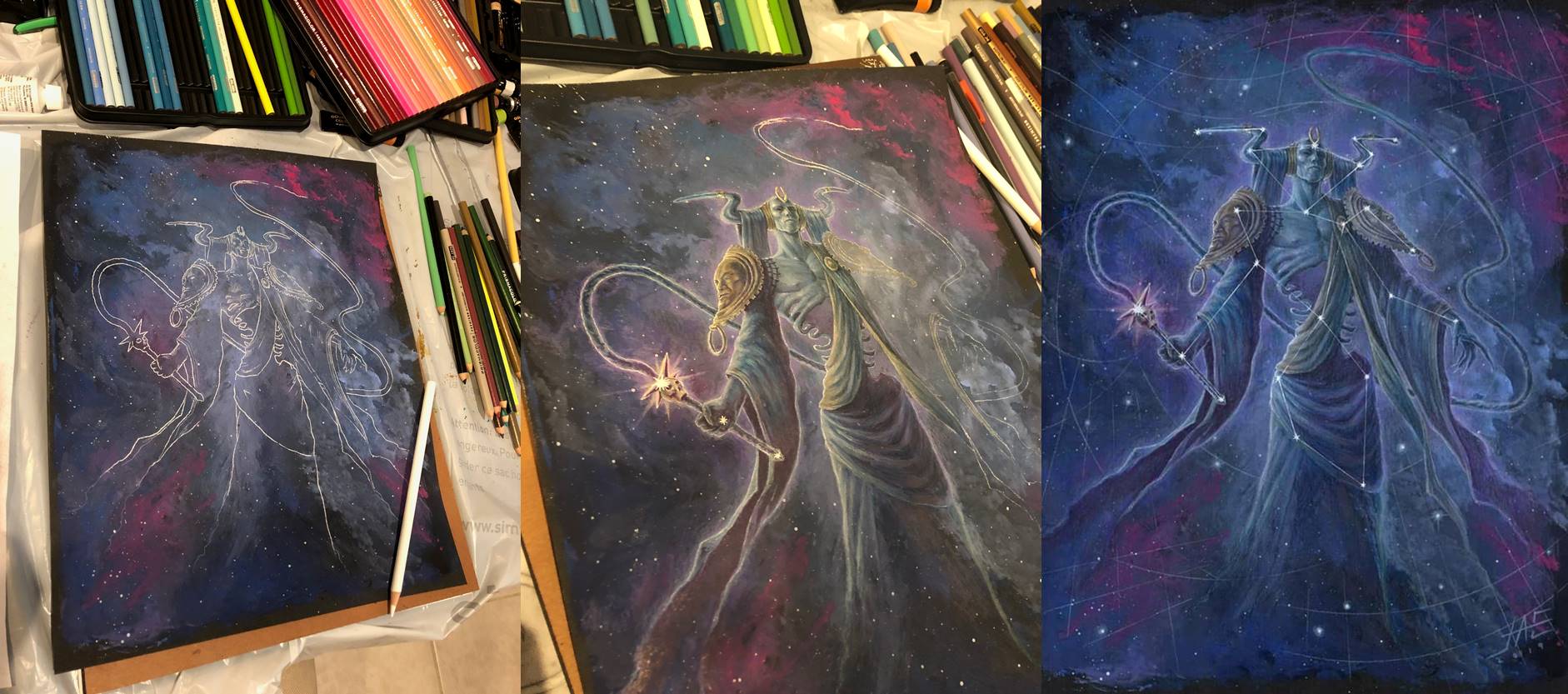
(Left to Right) Process: Linework, Color, Final Traditional Preliminary Painting- Erebos, Bleak-Hearted by Jason Engle, black multimedia paper, gouache and acrylic and colored pencil on black multimedia paper, 11” x 14” matted to 16” x 20”. Digital Final.
For the last few years, I’ve been starting a new art piece for Magic by creating the smaller and simpler preliminary sketches for approval, and then once approved, doing a larger, more detailed sketch on toned paper, to figure out more of the light and fine detail, before taking the image into Photoshop for coloring and rendering.
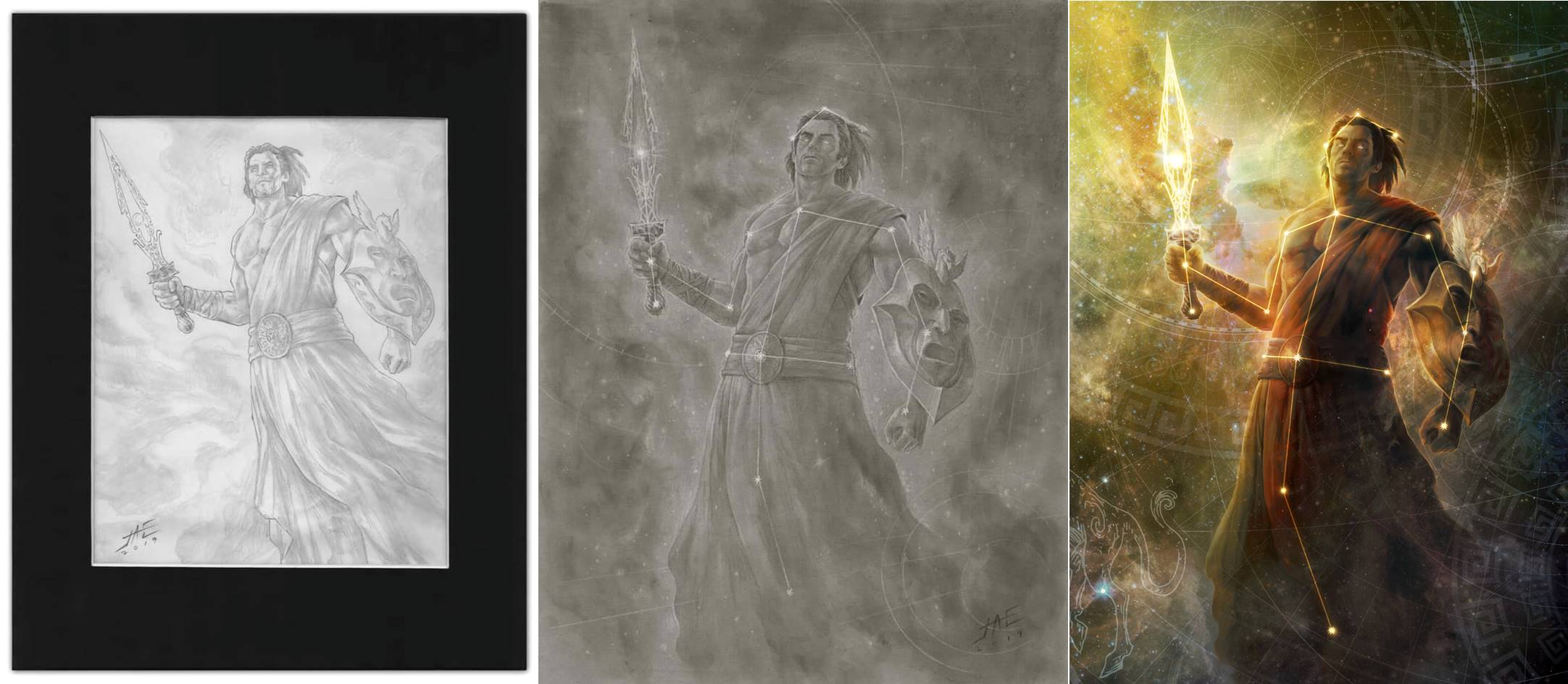
(Left to Right): Preliminary Sketch, Tonal Sketch, and Final Digital Render for Daxos, Blessed by the Sun by Jason Engle.
So, since I’ve been using white and black colored pencils for this process, it seemed easy enough to just do one of these “tonal drawings” in color. All I really needed was more pencils, in more colors. Seemed easy.
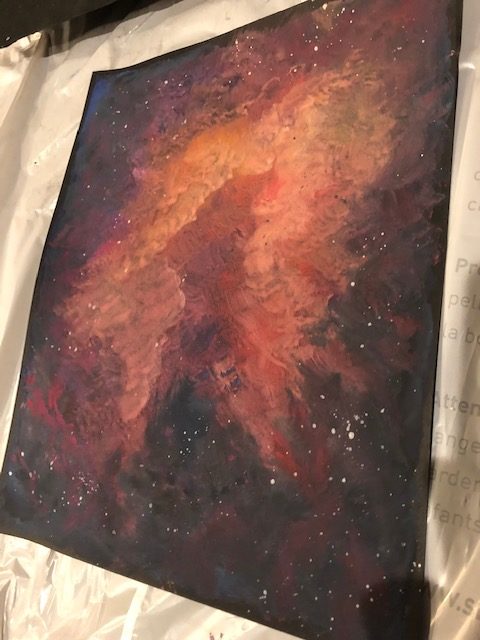
Background for Purphoros, Bronze-Blooded
But I also needed a background that was more than just gray paper could provide. I knew the style I was trying to create was based on high contrast silhouettes, and simple color schemes, but starfields and nebulas were going to make up the majority of the background. While I knew I would paint those in digitally for the final images, I figured I could find a way to do a simple version of that on paper.
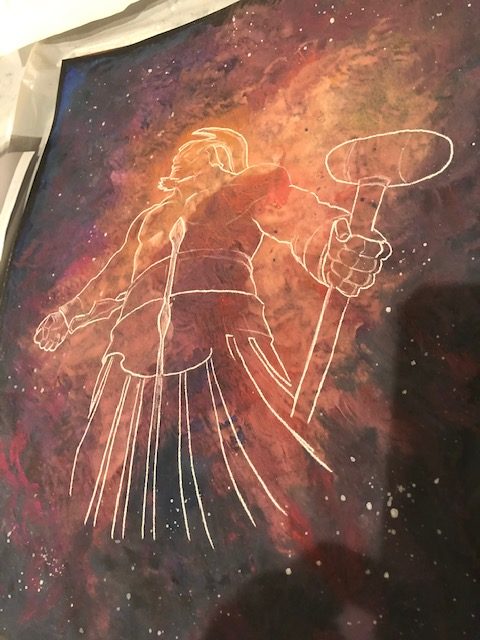
Linework for Purphoros, Bronze-Blooded
Abstract nebula shapes and colors are pretty much the easiest thing to paint. So I got some brushes, and started watching online paint tutorials to figure out which media would work best. My experience with real paint media before this was limited to two paintings: both in oil, both done for charity auctions at a convention, and both at great speed. They were equal parts fun and terrifying, as I had never painted in oil before, or with any real media, and I was doing it in front of a crowd of people. So, maybe not the best environment to learn, but I did the best I could considering the circumstances.
So my knowledge of where to start with this project, was pretty much at square one, because while I don’t know much about oil paint, I knew it likely wouldn’t work well if I was planning to draw over the top. But watercolor also seemed like an imperfect solution, and not an easy medium to pick up on the first try by all reports. Luckily, while looking at information on how to paint with acrylics, I found many people compare it to gouache, as a kind of happy medium between watercolor and acrylic paint. It sounded like a wonderful combination of all the attributes I’d need.
In the end, I also used some white acrylic paint for a few highlights and to speckle the stars into the background with a toothbrush (As I had seen on several tutorial videos). It worked pretty well, and far better than I had anticipated.
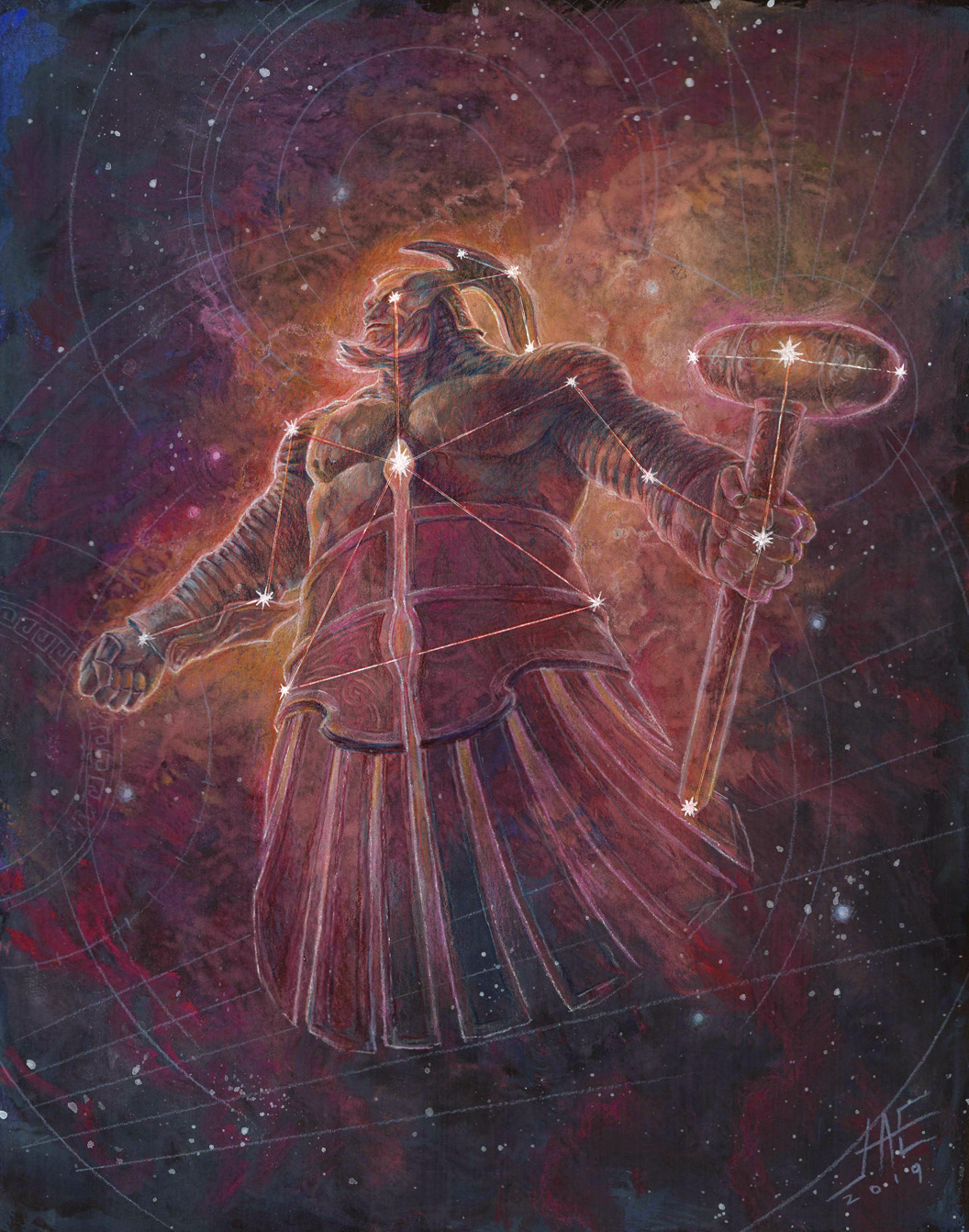
Preliminary Painting for Purphoros, Bronze-Blooded by Jason Engle, black multimedia paper, gouache and acrylic and colored pencil on black multimedia paper, 11” x 14” matted to 16” x 20”
I then went over the top with many, many colored pencils to build the figures, which was similar to my existing approach but with a great deal more fine tuning and layering. Thankfully my experience with colored pencil was a bit more extensive than with paint, so this part proved easier, though time consuming. The final works were then finished digitally.
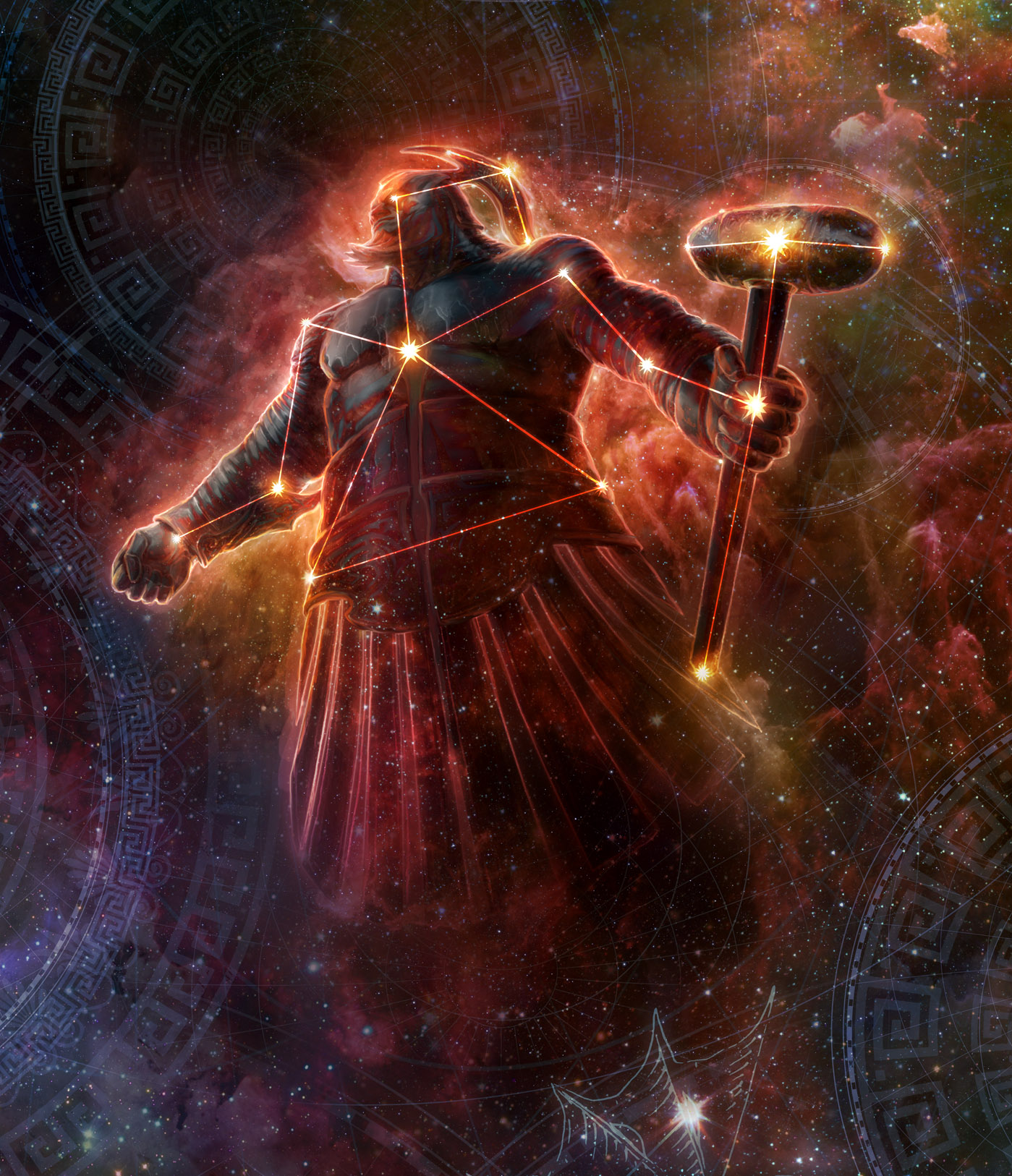
Purphoros, Bronze-Blooded by Jason Engle, Digital Final.
What an incredible process story! The preliminary paintings are really wonderful, and sound like one heck of a learning experience.
Is there anything special you can tell us about your subjects, either the Gods or Demigods or maybe both?
The gods were the initial focus of the project, and where most of my efforts were limited to in the style and early development phase. They were a joy to illustrate, using for design reference the very images I so admired during the first Theros set release. It’s a really special experience for an artist when they can draw from material that they have a personal love and appreciation for, to contribute and build onto a thing so much bigger than any one artist.
It was a hell of a good time. Mostly. Many of the gods have unique challenges from a fundamental illustration standpoint. For example, whoever created Purphoros’s upturned beard-spikes, is obviously a sadist.
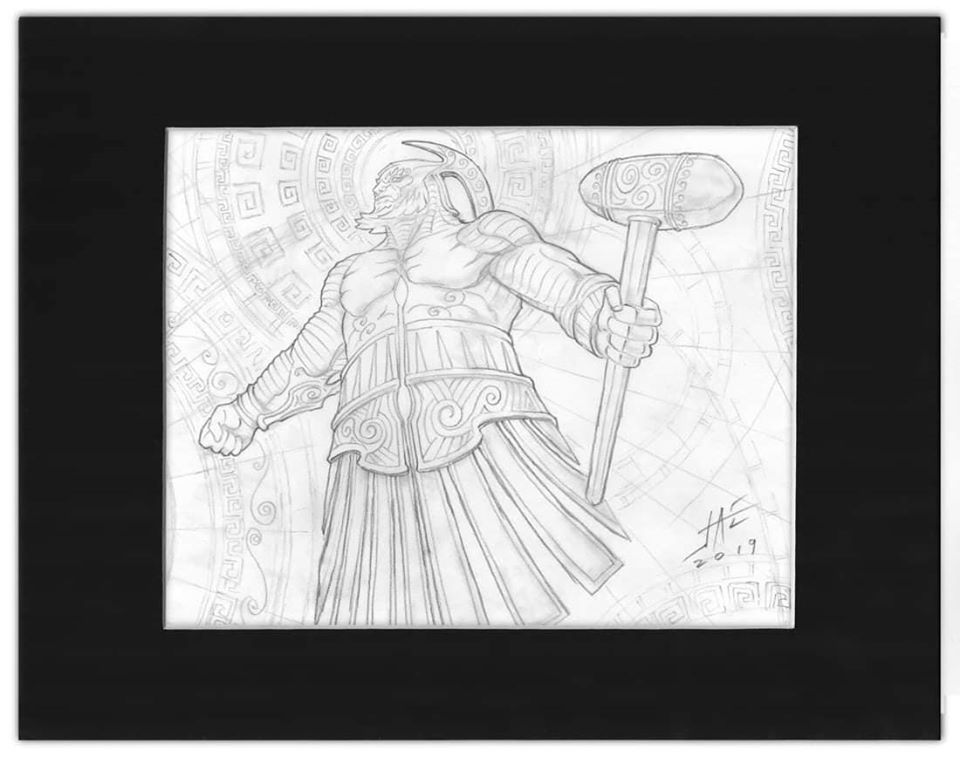
Initial Purphoros Concept Sketch by Jason Engle. Graphite on Paper.
Also, Klothys. Just Klothys. She has a lot of detail requirements, basically everywhere on her body, which was time consuming. But she has a hard job, being the new kid in town, she has to make an impression, and stand out while blending in. So I didn’t mind the extra time, she was worth it. Also, I should mention that her complex but beautiful design was actually straight from the hand of another artist who I have been lucky enough to know, the great Magali Villeneuve.
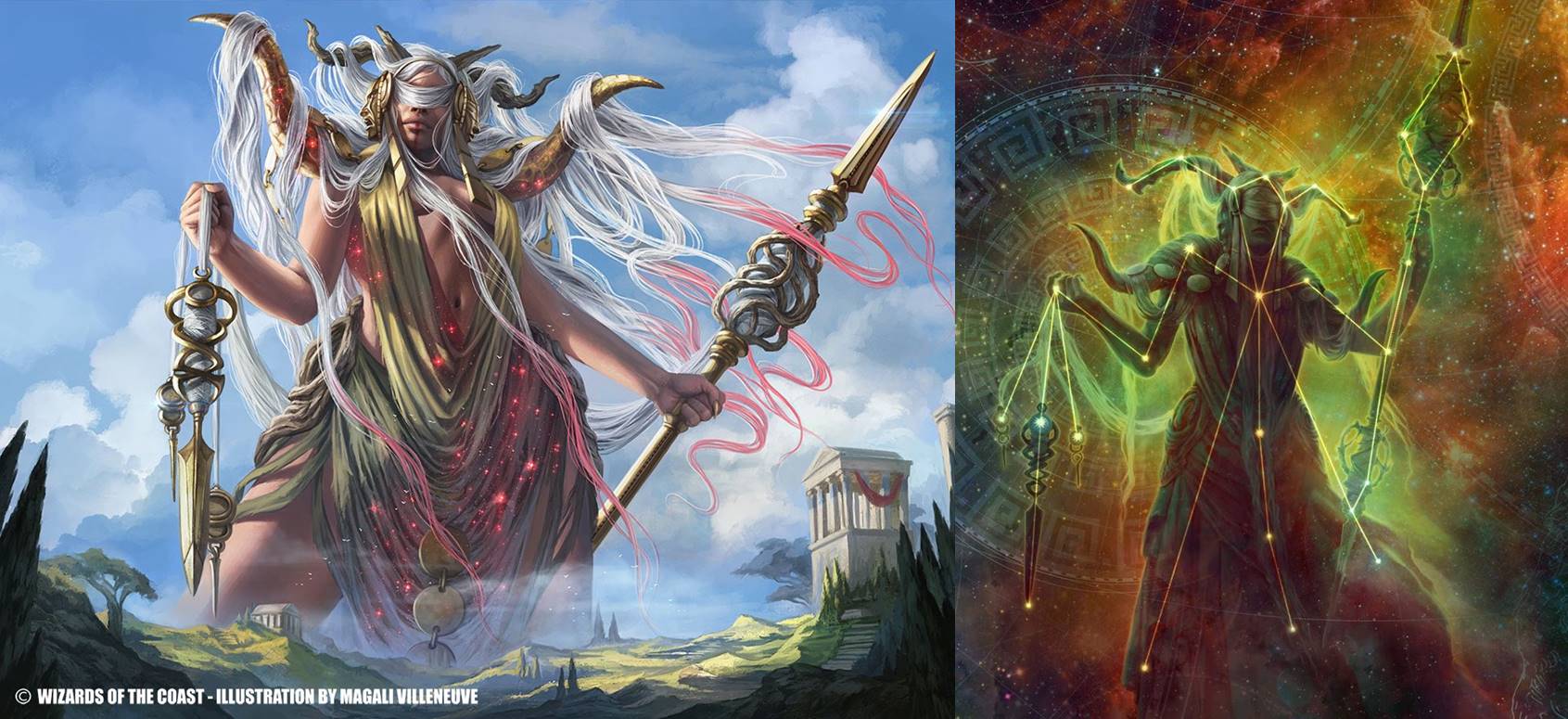
Left: Kloyths, God of Destiny by Magali Villeneuve. Digital. Right: Kloyths, God of Destiny by Jason Engle. Digital Final.
For the demi-gods, I had to wait until the main artists for the new art, had sent in their roughs, or completed works, to produce the showcase version.
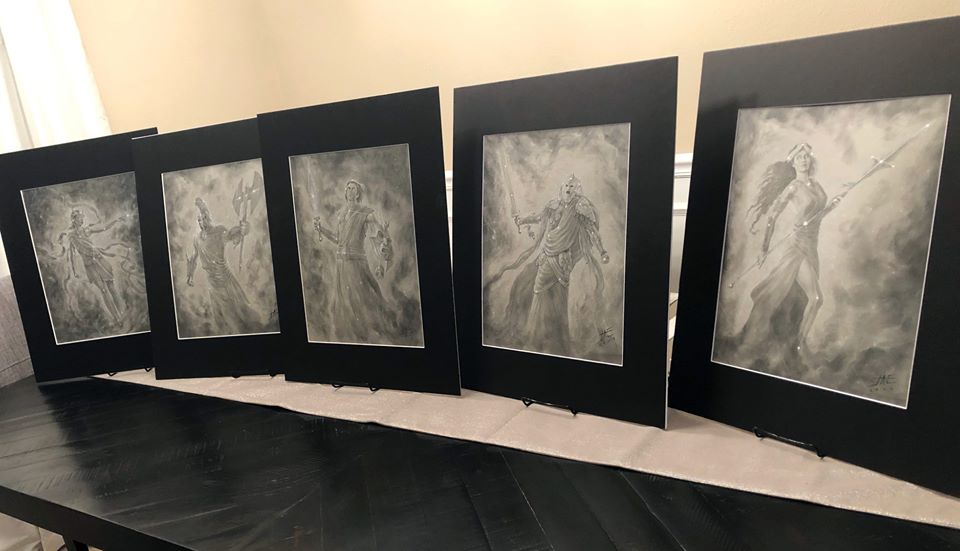
The Demigods of Theros by Jason Engle, colored pencil, powdered graphite, charcoal and white ink on acid free, 100% recycled, Strathmore grey toned paper, 11×14 matted to 16×20. Digital Finals.
So they were mostly produced under a much tighter schedule than the Gods, but thankfully, much of the hard questions I had already worked out by doing the gods themselves, as these characters were all designed to have similar style, color, and themes to their specific deity. It made this part of the process much smoother, and was definitely easier overall
This was your largest assignment ever for Magic. Do you have any reflections looking back at this experience you’d like to share?
It took a while to complete, and I’m very glad I had the time in the beginning, to experiment and find the solutions that were most successful. Not every project has that luxury, and I’m very glad I was able to put in the extra time and effort.
One of the first decisions I made in the project, was that since they were constellations, I wanted to make them all “fit” together, as a giant starchart. This seemed thematically cool, and allowed me to treat it as a project that fits neatly into the existing world in a more concrete fashion. Plus, it meant that I could share background space, and nebula and star chart elements that overlapped and informed the individual image backgrounds in unexpected ways, which I loved.
The only problem was the size.
You see, I usually paint Magic cards a little bigger than necessary, in case they are needed for promotional art or packaging, plus this allows me to make prints of the images at a far larger size than the cards, and while this takes longer, it always make the art better.
But these cards were guaranteed to be used in promotional work, and literally had to be as big as possible.
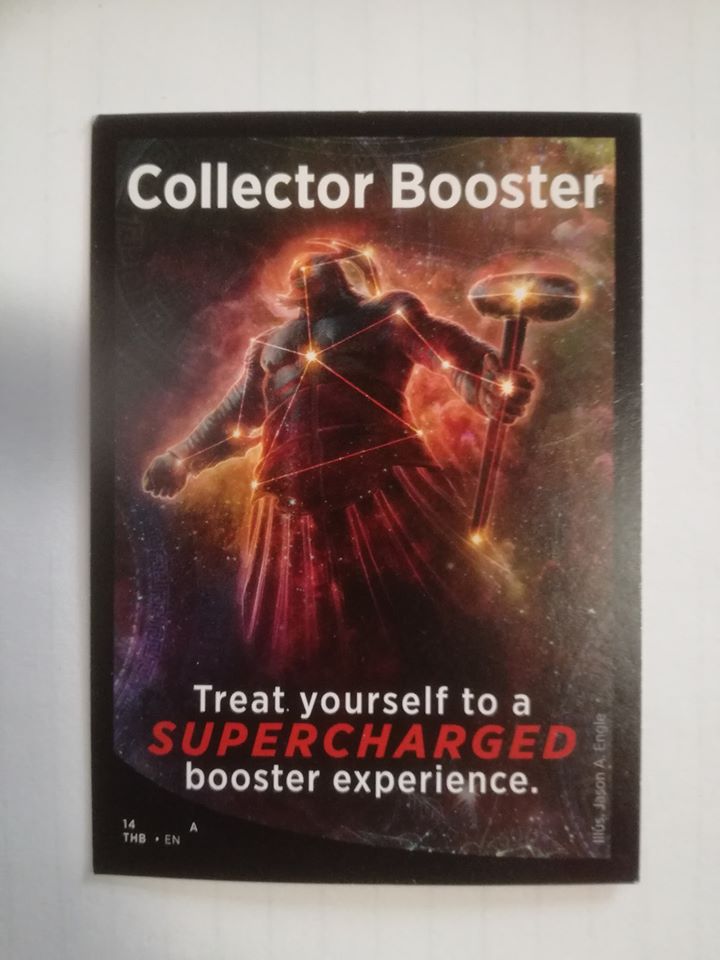
But doing them all together would be almost impossible, short of working on a supercomputer. So I made the background in one large image, 6 ½ ft. wide (in digital measurements) so I had enough space to assemble everything and fit all the constellations into one image.
I then rendered each of the characters in their own image file, where I could create all the detail necessary to make them all fully detailed and realized at maximum resolution and scale, and then when completed, I pulled them all into the main background image, and assembled them as a giant chart. With the exact proportions of a playmat, just, a 6 ½ ft. wide playmat.
The art director liked the idea so much, she had me send in the combined image, which they then used for additional promo materials.
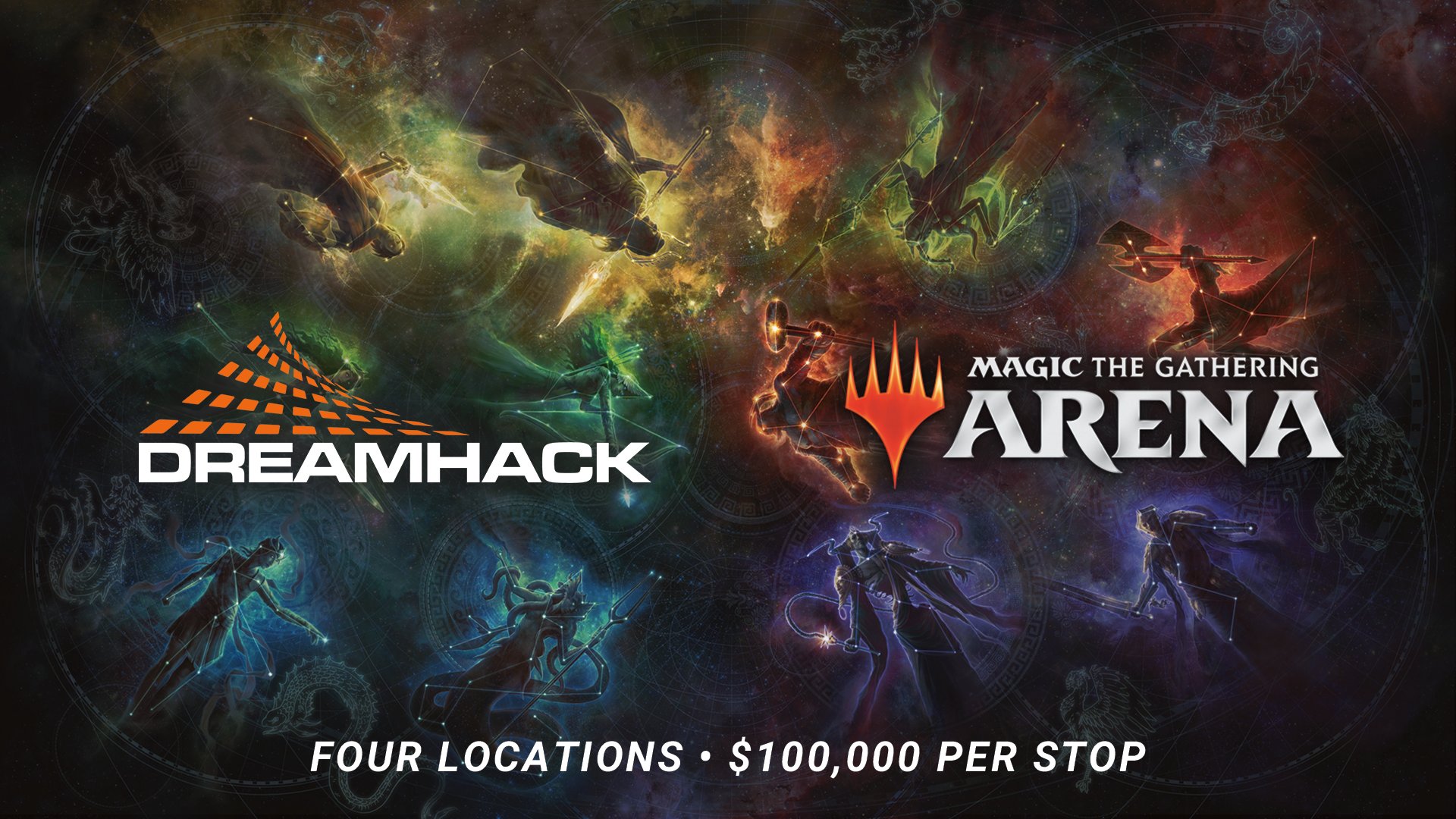
So the extra work, which I mainly decided to do because all of the Theros constellations combined together as part of a real “map of the stars” was extremely appealing, and proved to be very worthwhile.
In the end I was able to add a lot more than I had expected, to one of my favorite fantasy worlds in publishing today, and I will be forever grateful for the chance to do so. I did tell the art director that I would buy her a Ferrari one day, as a thank you, which was a joke. But it felt like the right idea anyway for some reason.
Jason, this has been surreal. Thanks so much for sharing this incredible experience and giving us a lookusing your paintbrush as a telescope to gaze into these constellations. They’re simply amazing, and such a special part of this visit to Theros.
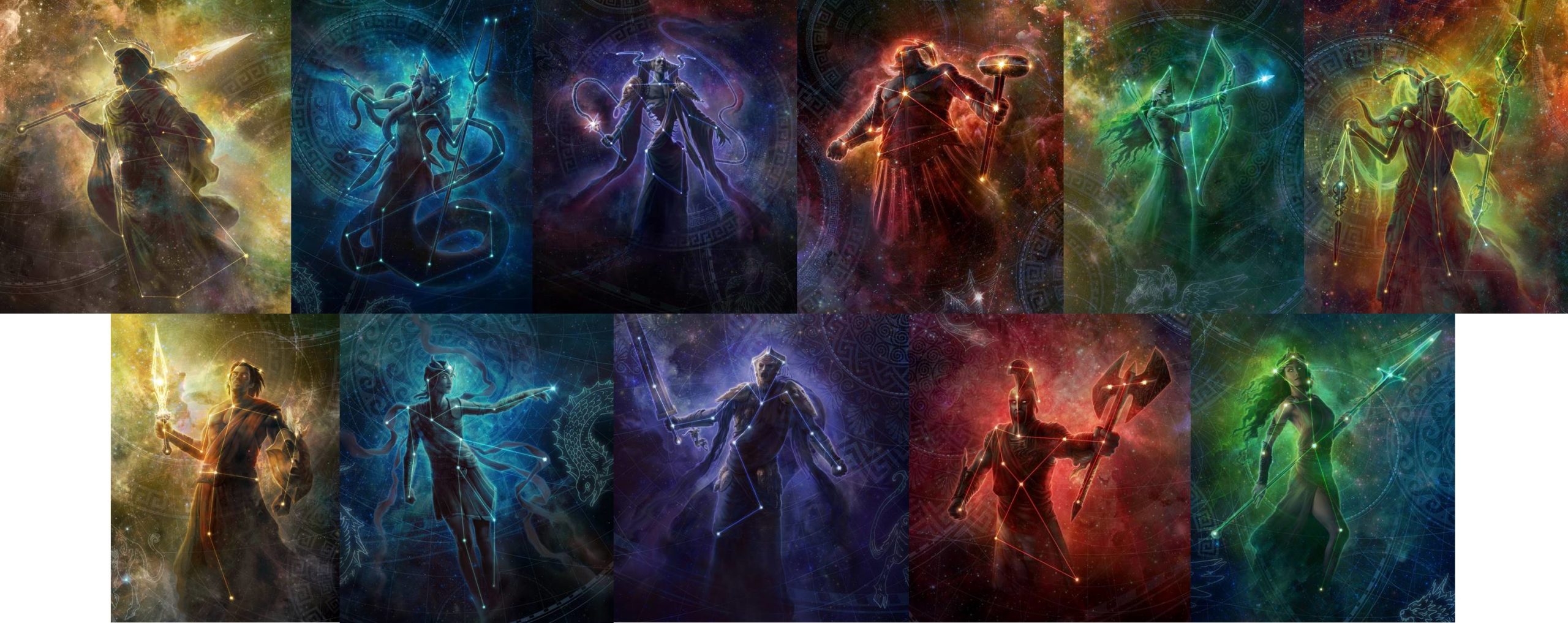
The Gods & Demigods of Theros
Wrapping Up
This concludes our journey through the night sky via Jason Engle’s magnificent Therosian star chart, and I hope you too have now had your “fill of ambrosia.” This constellation is my favorite piece of art from this set: it’s not only a technical triumph, but an artwork rooted in both Magic and real-world history, an intersection I find ever so powerful and important as a function of the artwork for this game.
A special thanks goes out to Jason for talking with me today and telling his Theros tale. To follow his work, you can find him on Twitter, Facebook, Instagram, and Deviantart. You can find links to all his social media on his portfolio page as well as news about his upcoming event appearances.
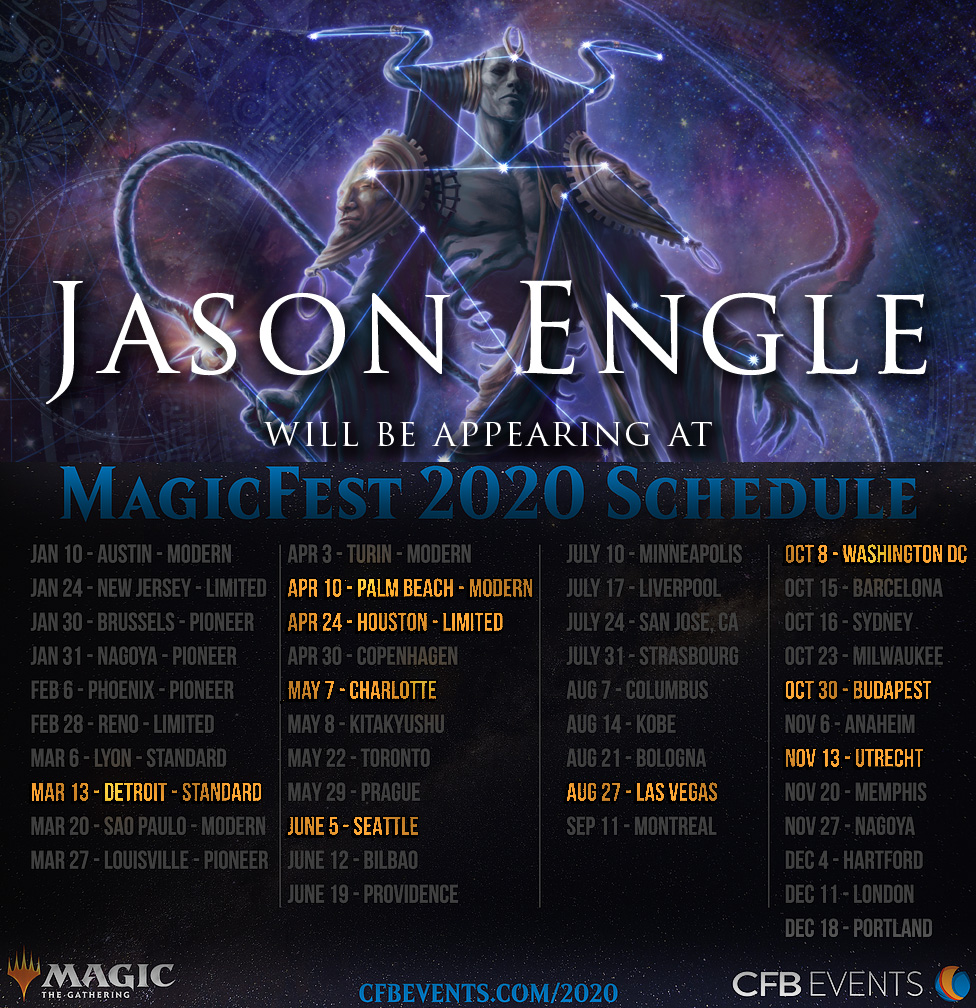
Jason Engle’s Magic Fest Event appearances for 2020
And, make sure you stay tuned for the upcoming Art Market Minute covering the sale of each piece of this constellation. There were more than thirty sketches and paintings that make up this combined artwork, and we’ll look at each one of them as they ventured out into open market.
Next time in the Mirror Gallery takes us to the Grand Art Tour for Theros, and I’ll dive into some of my other favorite pieces from this set, tell you why I like them, and why you might like them too. That’s in two weeks, but in the meantime to see more original #mtgart and other #vorthos related things, follow me on Twitter. Feel free to ask questions or retweet to continue the conversation. Thanks and see you next time!
Donny Caltrider has been playing Magic since 2002 and collecting original Magic art since 2017. He has an M.A. in Museum Studies from Johns Hopkins University and enjoys telling stories about art, objects, and the intersection of fantasy with real-life. You can find him on Twitter talking about #mtgart, museums, and other #vorthos related goodness. Follow along and continue the conversation!


